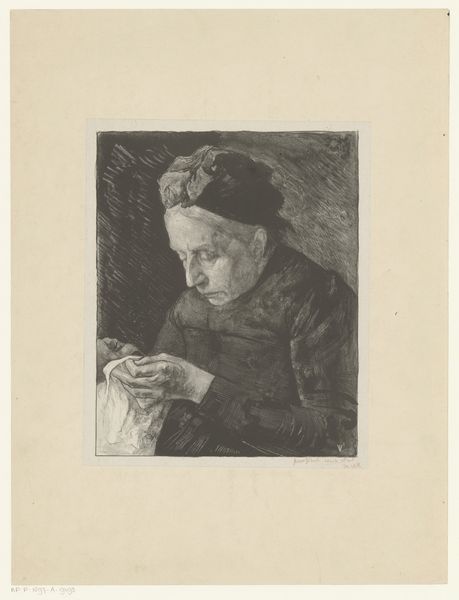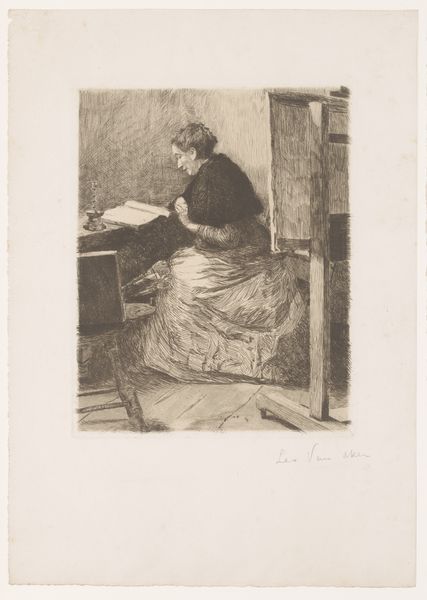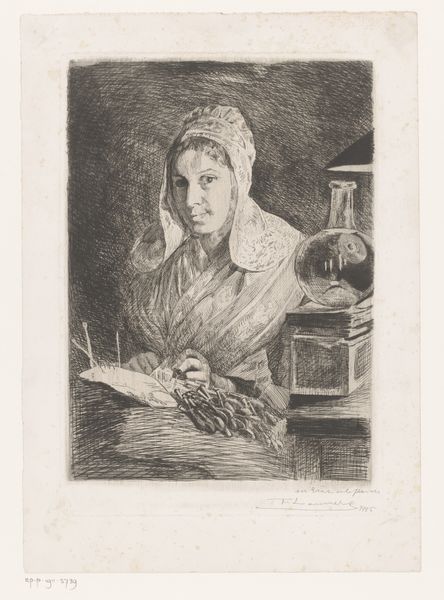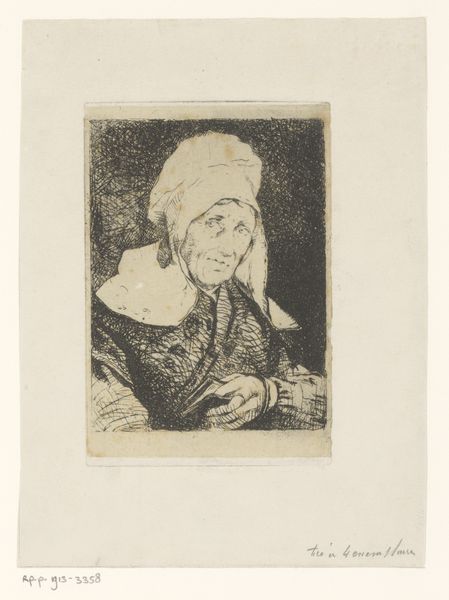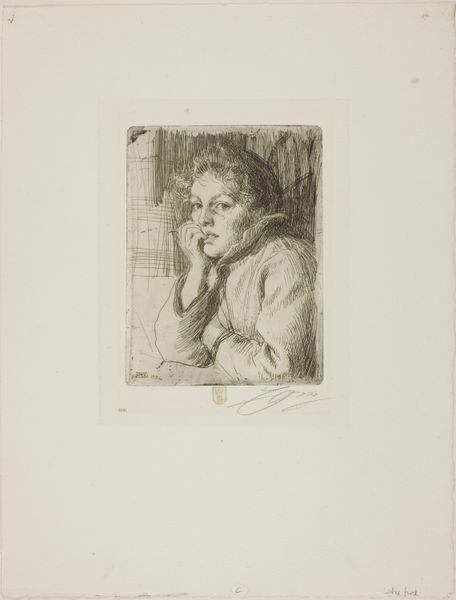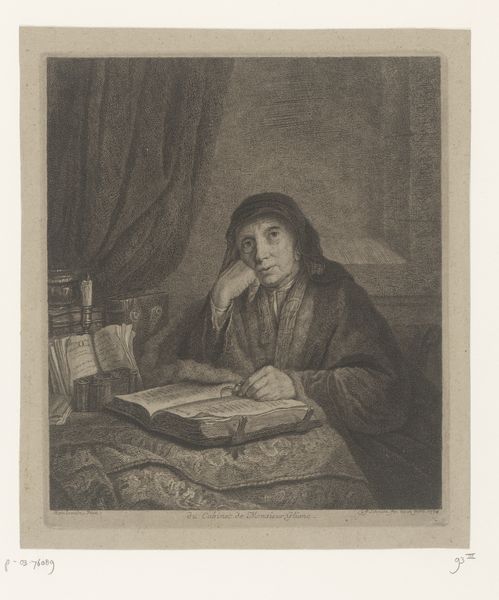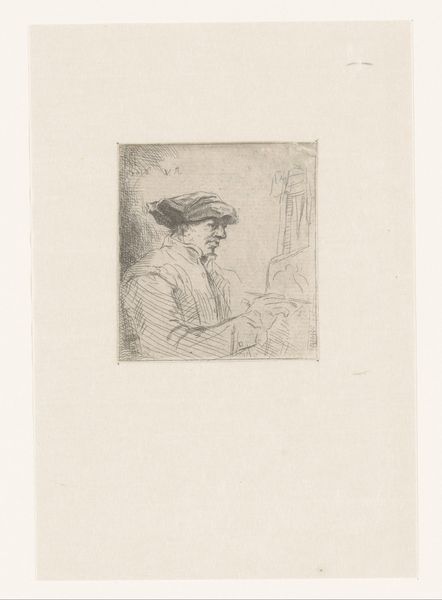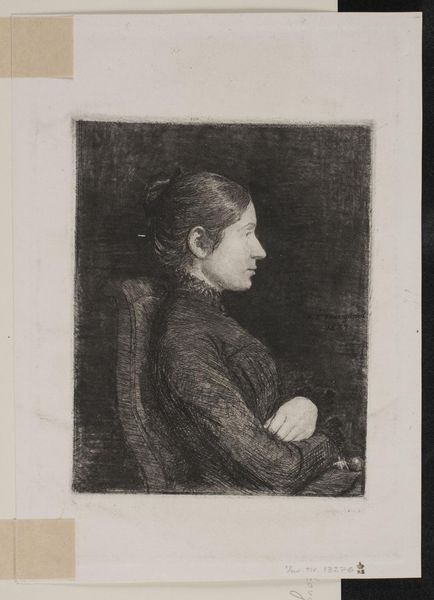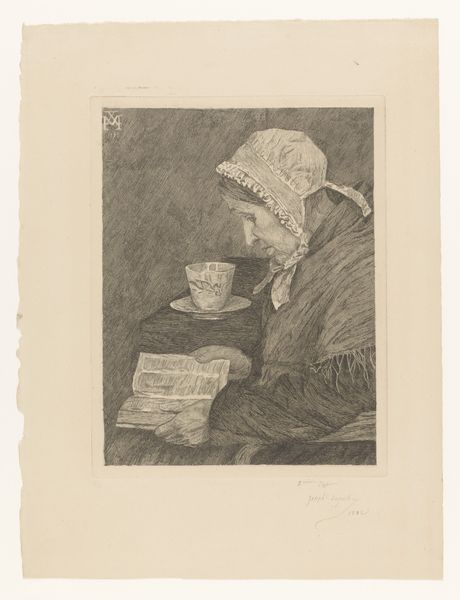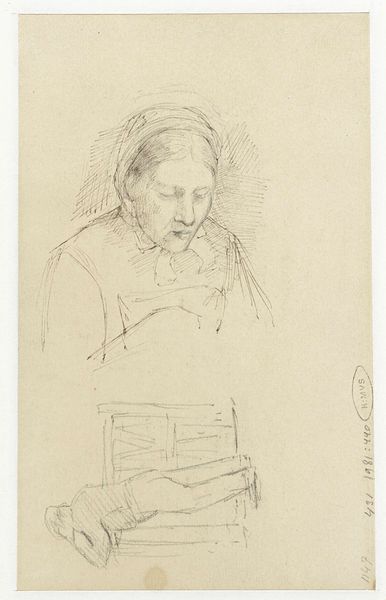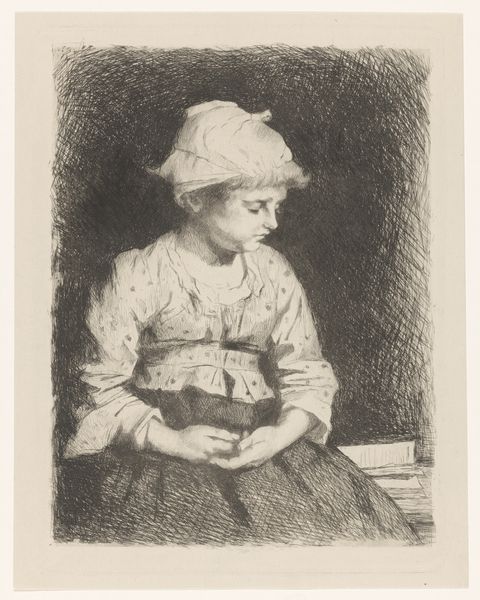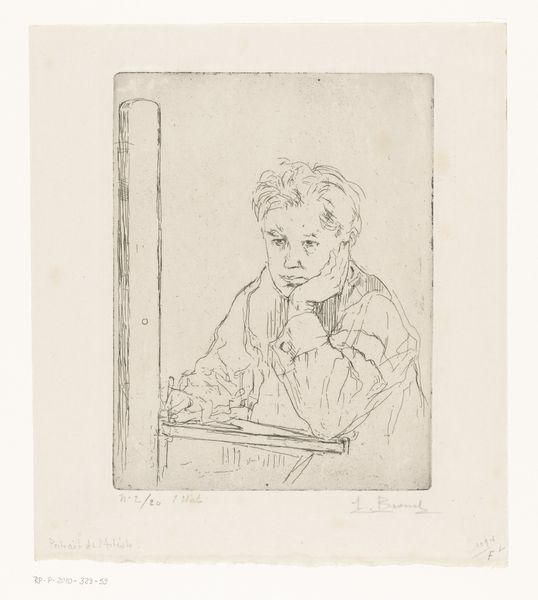
drawing, graphite
#
portrait
#
drawing
#
figuration
#
graphite
#
modernism
#
realism
Dimensions: height 384 mm, width 288 mm
Copyright: Rijks Museum: Open Domain
Curator: This is Jan Veth’s 1891 graphite drawing, “Portret van mevrouw Sluiter-Metelerkamp,” currently held in the Rijksmuseum collection. Editor: My first impression is one of intense focus. The contrast between the woman's dark clothing and the bright cloth in her hands really draws your eye to her labor. Curator: Indeed. Veth was very interested in portraying the character of his sitters. This portrait highlights themes of domesticity and industry which gained traction in art at the time, marking a departure from conventional glamorous portraits. Editor: Yes, you see the emphasis shift to the depiction of labor, ordinary acts of sewing or mending elevated through the artist's rendering. It really makes you consider the texture of the materials—the paper, the graphite, the fabric—all part of the making. How do you think class plays into it? Curator: Well, while it avoids explicit commentary, one can infer some understanding about middle-class values from the representation of labor and domestic roles. It was certainly a societal norm during the rise of the Dutch bourgeoisie. This piece reflects that environment but, like other works from that period, opens questions rather than dictating answers. Editor: And in its display today, the portrait performs a new function. Put on display in the gallery or even kept digitally. How accessible is this depiction of labour? I find it worth asking whether these portraits reflect a shared reality or construct new boundaries of viewership. Curator: These are crucial questions for contextualizing Veth’s work, which actively contributed to shaping perceptions around gender and class during the era it was created. Its impact remains significant through our ongoing interaction with the piece today. Editor: Precisely, examining the drawing’s process brings us closer to questioning its presence, its purpose and the meanings associated to its materials then and now. It certainly opens doors to look into that era and that process, in order to see what’s actually in our hands when considering an artwork.
Comments
No comments
Be the first to comment and join the conversation on the ultimate creative platform.
